We explain what the tiger is and what the anatomy and behavior of this animal is like. Also, what are their characteristics, types and more.
What is the tiger?
The tiger is a feline that lives exclusively in Asia . Unlike other mammals , it does not live in herds but in solitude, occasionally sharing a territory between a male and a female.
Depending on the species, the weight of a male specimen varies between 50 and 260 kg . Its length can be between 190 and 330 cm, including the tail. Females are smaller and their weight varies between 25 and 170 kg, and their length between 175 and 275 cm.
In recent times, three subspecies of tiger have already become extinct and the rest are in danger of extinction due to indiscriminate hunting and the destruction of their natural habitats.
Characteristics of the tiger :
Striped fur
 Striped fur is the characteristic by which any subspecies of tiger can be identified with the naked eye. In general, tigers have orange fur with stripes of a darker color, between brown and black.
Striped fur is the characteristic by which any subspecies of tiger can be identified with the naked eye. In general, tigers have orange fur with stripes of a darker color, between brown and black.The arrangement of the stripes is perpendicular to the length of the body . In addition, they have a whitish intermediate and ventral area.
Females have fewer stripes than males . Each issue has a unique stripe pattern, ie each stripe pattern is like fingerprints of humans .
Exceptions to orange coloring
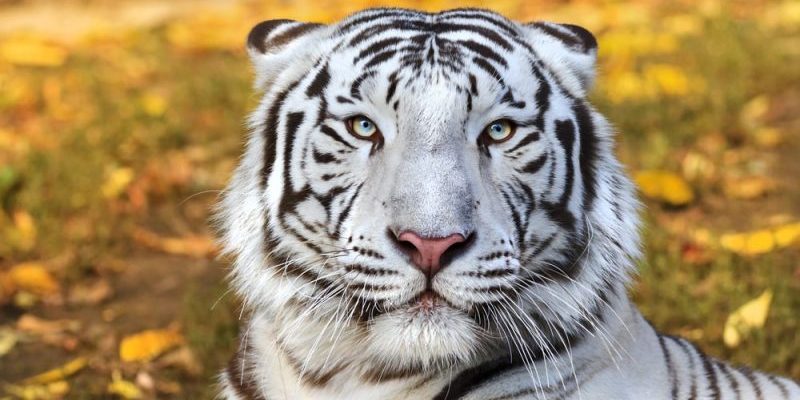 There are three species of tigers that have specimens of other colors:
There are three species of tigers that have specimens of other colors:
- White Tiger. These tigers do not form a subspecies of their own but are individuals with a genetic condition that almost completely eliminates their orange coloration, but the dark stripes do not change. Since it is a recessive gene, in almost all cases the baby white tigers have an orange coloration.
- Golden tiger. It is not a subspecies either, but rather certain individuals with a gene that turns the fur of a reddish-yellow color and the stripes lighter.
- Blue tiger. Although sightings have been reported in China , these tigers have not been scientifically studied and no verifiable evidence has been found for their existence today. It would be a tiger that instead of the orange color have a bluish color. The photographs found on the Internet are imaginary recreations of what these tigers would look like.
Territorial behavior

The territory is marked by spraying urine or other secretions on the trees and other landmarks. If there is a conflict over territorial delimitation, males can enter into a physical fight over territory, although in most cases none of the individuals involved are injured.
When a male allows one or more females to enter his territory, he shares food with them and even allows them to eat first.
Carnivorous diet
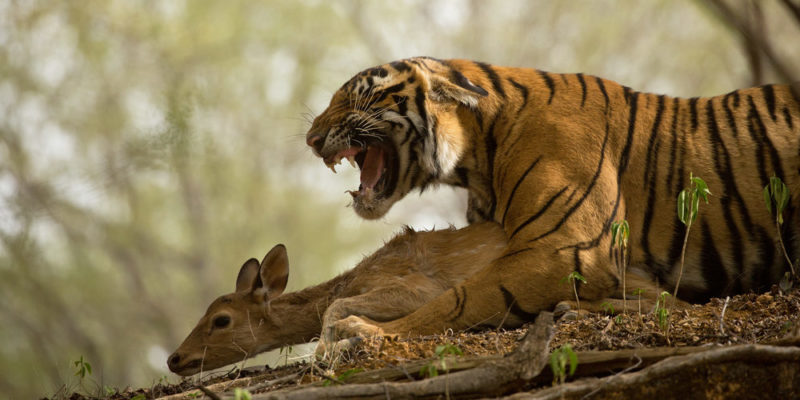 The tiger is a predator , that is, an animal that feeds on other animals . In almost all cases it is a super predator, that is, a species that has no predators in its ecosystem .
The tiger is a predator , that is, an animal that feeds on other animals . In almost all cases it is a super predator, that is, a species that has no predators in its ecosystem .Although they can hunt large animals such as buffalo , elk, and deer, they also prey on smaller animals such as monkeys , hares, or fish .
Hunting methods
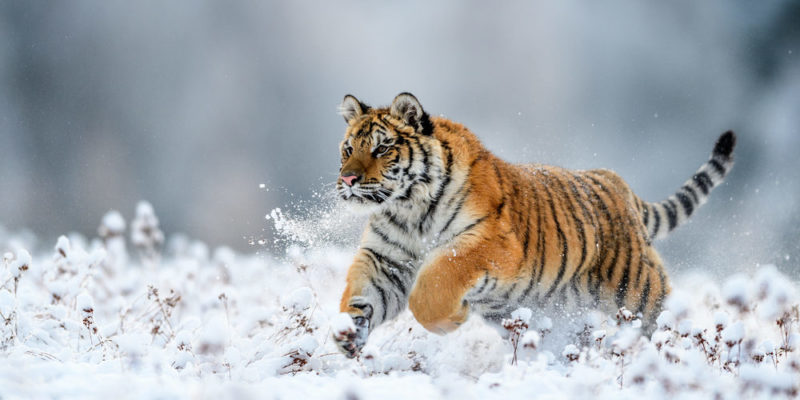 They usually hunt alone, attacking their prey from behind or lateral to their movement. They can catch up with their prey in a race, as they are faster than many animals and can reach speeds of 90 km / h.
They usually hunt alone, attacking their prey from behind or lateral to their movement. They can catch up with their prey in a race, as they are faster than many animals and can reach speeds of 90 km / h.Once they have their prey downed, they bite the neck to puncture the windpipe , break the spinal cord and achieve a quick death.
When specimens are available, tigers prefer to hunt large prey that they can consume over several days.
Competitive animals
Despite being super predators in almost all cases, tigers can find a threat in other animals with whom they compete for the same prey or the same territory, or because they can eat their young.
For this reason, on many occasions they attack marsh crocodiles , despite not eating them. In China they compete with grizzly bears, and although tigers are usually victorious, both species generally avoid each other.
-
Reproduction
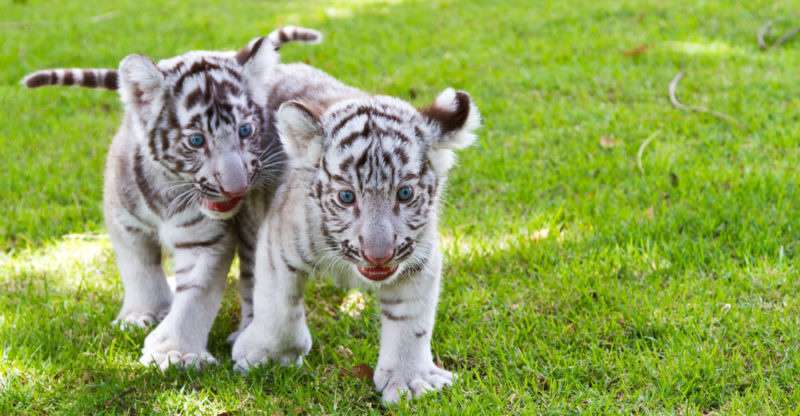
Males reach sexual maturity at 4 or 5 years and females at 3 or 4 years. Females are receptive to mating only once a year and for a few days.
Gestation lasts 103 days (on average) and each litter is 1 to 7 young. Births usually occur between November and April. To give birth, the female looks for sheltered places, such as caves or areas with a lot of vegetation.
-
Distribution and habitat
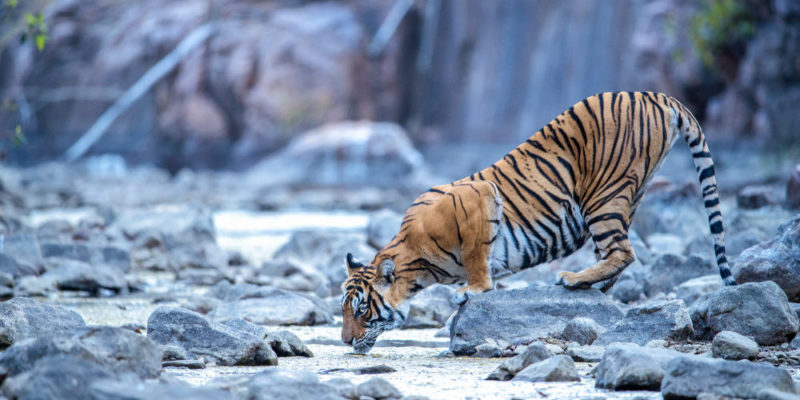
Tigers live only in Asia . The places they are looking to live have to offer some kind of natural protection , water, and prey on which they can feed.
They do not live in herds, although males may let females enter their territory . Each species has a specific habitat, from forests and rainforests to savannas , grasslands, and mangroves. They also tend to inhabit rocky mountains.
-
Hybrids
- Liger It is a cross between a male lion and a female tiger. Both in physical characteristics and in their behavior a combination of both species is observed, but their size is much larger: they have the appearance of a gigantic lion with tiger stripes. Although the males are sterile, the females are fertile.
- Tigon. Cross between male tiger and lioness. They look like a lion with tiger stripes, but are smaller than either parent.
Subspecies

- Bengal tiger. It lives in India , Bangladesh, Nepal, Bhutan and Burma. The total population is approximately 2000 specimens, most of which are found in India.
- Indochinese tiger. Lives in Cambodia, China, Laos, Burma, Thailand, and Vietnam. The number of copies is calculated between 700 and 1,300.
- Malay tiger. Its population is just over 500 specimens, all on the Malay Peninsula.
- Sumatran tiger. Less than 500 specimens survive, living on the island of Sumatra (Indonesia)
- Amur tiger. Protected species of Siberia, with only 400 specimens. A thick layer of fat protects it from extreme cold.
- South China tiger. The most threatened species of tiger, with only 59 specimens living in captivity.
The above content published at Collaborative Research Group is for informational and educational purposes only and has been developed by referring to reliable sources and recommendations from technology experts. We do not have any contact with official entities nor do we intend to replace the information that they emit.
MA student of the TransAtlantic Masters program at UNC-Chapel Hill. Political Science with a focus on European Studies. Expressed ideas are open to revision. He not only covers Technical articles but also has skills in the fields of SEO, graphics, web development and coding. .
Leave a reply
Your email address will not be published. Required fields are marked *Recent post

Sport: What Is It, Types, Risks, Features, Characteristics and Examples

Dogs: Emergence, Features, Characteristics, Feeding and Breeds

Story: Definition, Elements, Structure, Features and Characteristics

